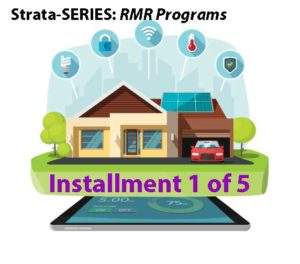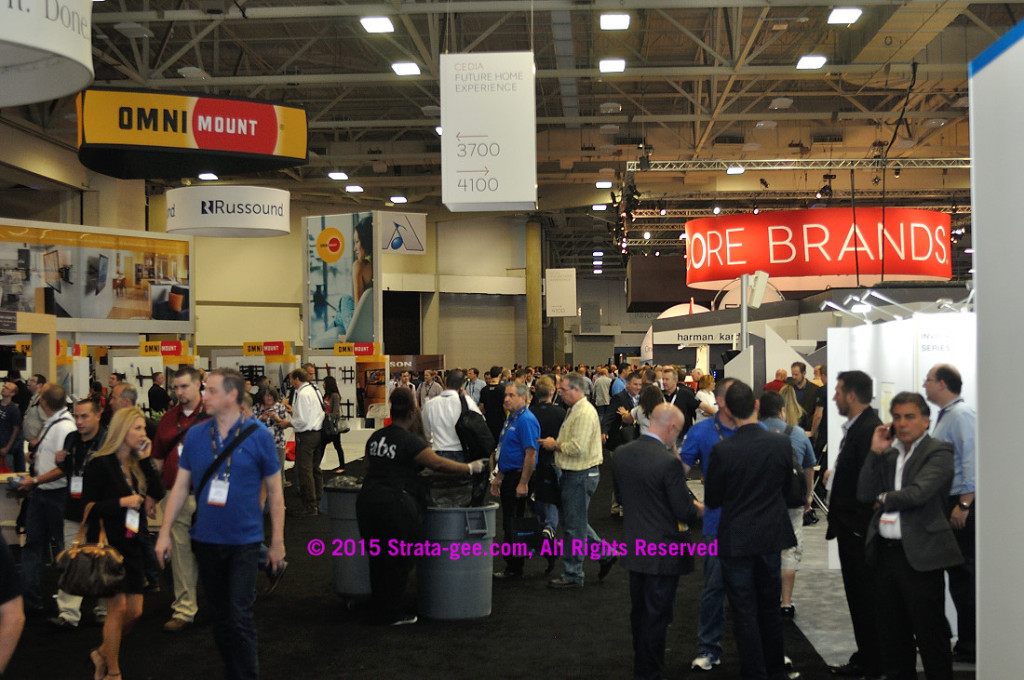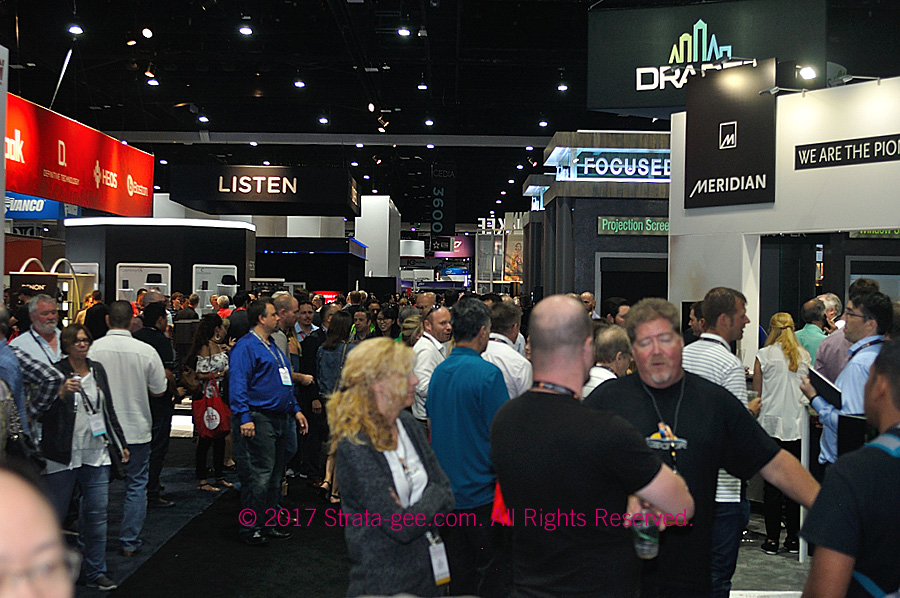Topic Introduction – RMR Programs Can Change the Game
 When given the assignment to check up on the state of recurring monthly revenue (RMR) programs, it seemed like a pretty straightforward task. After all, everybody embraces RMR…right? We began by randomly reaching out to custom integrators around the country – including a few large, high revenue businesses. The simple request…tell us about your RMR program.
When given the assignment to check up on the state of recurring monthly revenue (RMR) programs, it seemed like a pretty straightforward task. After all, everybody embraces RMR…right? We began by randomly reaching out to custom integrators around the country – including a few large, high revenue businesses. The simple request…tell us about your RMR program.
[This is the first post in a series of articles we call Strata-SERIES: RMR Programs. Read about why we created this series here…]
First problem? Nobody wanted to talk to us! Read on to see why…
Surprisingly, the first four integrators we spoke with had either never offered any kind of RMR program…or they had tried a program and ended up dropping it…or they had an existing program, but it was not particularly successful. Most of them expressed frustration over their RMR efforts, or resignation that RMR was just not working out. With this being the case, none of them wanted to be quoted as part of this story.
When asked why he was not providing his clients with an RMR program, one integrator snapped back angrily:
“I didn’t get into the technology business…to sell insurance!”
Fortunately, with further due diligence, we found four top integration companies who all offer a successful RMR program. Interestingly, each had devised a slightly different solution – three of them with home-grown programs, one of them choosing to work with an outsourced independent national provider of RMR programs.
But in describing the paths they each followed to get to their unique implementation, we were struck by the many parallels there were in their stories.
The integrators we spoke with for this story were: Chris Smith of Cloud9 Smart (New York, NY), Ben Lentz of Cyber Technology Group (Scottsdale, AZ), Ron Wanless of Technology Design Associates (Oregon & Washington), and Matt Walin of Brilliant AV (Costa Mesa, CA).
Low But Growing Adoption of RMR Programs Among Integrators
As noted above, the initial results of our outreach led us to suspect that the rate of RMR adoption is still relatively low. To confirm our suspicions, we reached out to Dave Pedigo, Vice President of Emerging Technologies for CEDIA, and the person at CEDIA in charge of their surveys and statistics. According to Pedigo, the group’s data shows that only about 29% of all CEDIA Home Technology Professionals offer some form of service agreement. And nearly as many, 21%, say that the do not offer any type of RMR program…and they do not intend to ever offer one!
CEDIA’s survey results are consistent with an estimate shared with us by Mike Maniscalco of Ihiji, a company that offers hardware and dashboard solutions that enable remote system monitoring and management. Maniscalco told us that he estimated that around 30%-40% of integrators offer some form of an RMR program, and that the number is growing every year…but growing very slowly.
This means that an astonishing 70% or so of all integrators are not offering their clients any form of maintenance agreement on their installations. And yet, there are significant forces driving integrators more towards the notion of offering some form of extended servicing arrangements for their clients.
Are Integrators a Contractor? Or Are They a Technology Service Agency?
How you perceive the need for, and the value of, RMR maintenance agreements, depends in part on how you view your business. Do you see your integration business as another form of residential contractor, like an electrician, a painter, or a plumber – but one that designs, sells, installs, and configures residential AV technology systems in an unending series of disconnected projects?
Or do you see your business more as a technology service agency – establishing and maintaining lifelong relationships with technology-appreciating clients who want to own – and enjoy – well designed and maintained home technology solutions over time? Instead of a series of disconnected projects, you look at your business as one with an ever-expanding roster of clients that you seek to ensure their continued and ongoing enjoyment with their technology solutions over time through an ongoing maintenance program. Or as one of the integrators on our panel puts it, act as a technology enjoyment advocate.
Typically, contractors complete a project and move on to the next one. For technology integrators in this camp, once they’ve completed the installation, walked the client through a user tutorial, and turned over the keys – they move on. Oh sure, if something goes wrong, you’ll schedule a truck roll and send a tech out to fix what broke– for free if it’s during your initial warranty period, or for a relatively stiff service fee if the system is out of warranty. But other than for occasional service calls, you have moved on to your next project.
The Longer View
If you are a technology service agency, you have a longer view with a goal of ensuring your client’s ongoing satisfaction with their system. To best ensure this, you need to conduct ongoing system monitoring, management, and maintenance. When necessary, you update firmware, software, device drivers, etc. Also, you remotely monitor performance, such as network loads and usage rates to avoid system overload from newer client-added devices. You proactively recommend system capacity upgrades before failures have the opportunity to occur. You reboot stubborn devices to nudge them back to life, usually before the client even knew it was necessary. Your goal is to catch looming problems, before they become failures.
If you lean towards the former “contractor” model, then you may not appreciate the concept of devising a process that will inexorably tie you to your clients and their installations, potentially forever.
On the other hand, if you identify more closely with the latter “service agency” model – then you should consider designing some form of maintenance agreement offer for your clients governing ongoing system maintenance and repair of their technology.

Converging Forces Create the Need for Ongoing System Maintenance
Trends in our industry are converging in such a way to drive a real consumer need for ongoing assistance with their technology systems. These forces include:
- The Shift from Analog to Digital – In the good old days of analog AV equipment, stuff was reliable and would work for years. As our industry transitioned from analog to digital electronics, products got inherently more complicated. Now we have massively integrated circuits, firmware, software, device drivers – with security and operational updates required to keep everything operating smoothly.
- Accelerated Obsolescence – Another element of the shift from analog to digital is an accelerated obsolescence rate. Analog products would run without fail for years, even decades. But digital products are obsolete within just a few short years, thanks to a variety of factors, including technological advances.
- Complicated Wired & Wireless Networks are Required – Of course, in today’s world, all residential systems involve an increasingly complicated home network. This introduces Ethernet cabling into the home, wireless networking devices, switches, matrixes, routers, hubs, modems, etc. all into the mix. And everything the integrator installs is “hung” on this network. When working correctly, networks are a magical dream for clients. But when they fail…they are your client’s nightmare.
- Stuff Breaks – Most of our panel said simply – nowadays, stuff breaks. All home technology products these days have, essentially, a computer built into them. And sooner or later, that computer – like ALL computers – is going to get hung up or otherwise stop working. And even though the solution is often relatively simple – say, a reboot of the device – clients, for the most part, do not want to deal with issues like this.
- Declining Margins – Hardware margins continue to decline over time creating extreme pressure on integrators, who often provide free warranty work on their installations for some period of time – typically six months to a year. Beyond the warranty, in the (more profitable) past, integrators could offer to send a tech to swap a router at no charge. But as margins decline it is harder to offer any free goods or services.
- System Sophistication Creates Consumer Service Need – You hold more computing power in the palm of your hand with an iPhone, than astronauts heading to the moon had on their Apollo 11 spacecraft. For tech nerds like us – that is truly amazing. But for our clients, that reality often leads to confusion and “pilot error.” The more sophisticated systems become, the more clients desperately need a technology expert help them seamlessly maneuver the technology universe.
- Emerging Solutions Enabling Remote Monitoring – Several companies have come up with some helpful hardware/ software solutions to enable remote system monitoring and management. Companies like Ihiji, Domotz, Control4 (BakPak), SnapAV (OvrC), and more now make it easier to remotely monitor and manage systems. Added to this are remote cyclable power solutions such as BlueBolt, and WattBox. Our panel told us that anywhere from 50%-80% of all problems are solved through a simple remotely generated power reset.
NOTE: This post is the first installment in a series of articles we call Strata-SERIES: RMR Programs. See why we created this series here…
See Installment 2 in Strata-SERIES: RMR Programs – How We Do RMR in the Big City
Strata-SERIES: RMR Programs is an expanded series of articles based on my research for the cover story commissioned by Residential Systems for their December issue. Check out the original article here…or visit the Residential Systems home page here for other great stories…





Leave a Reply